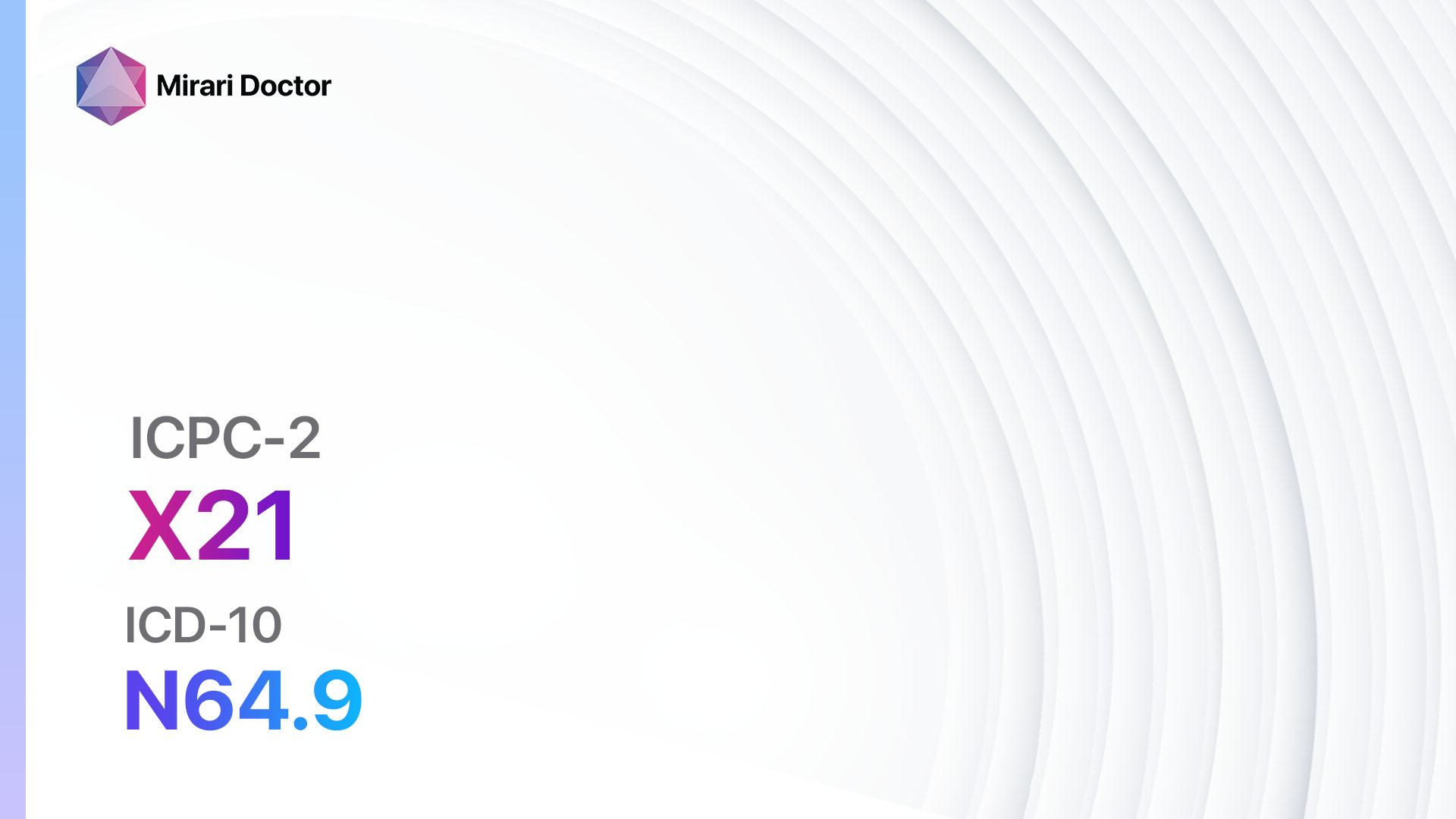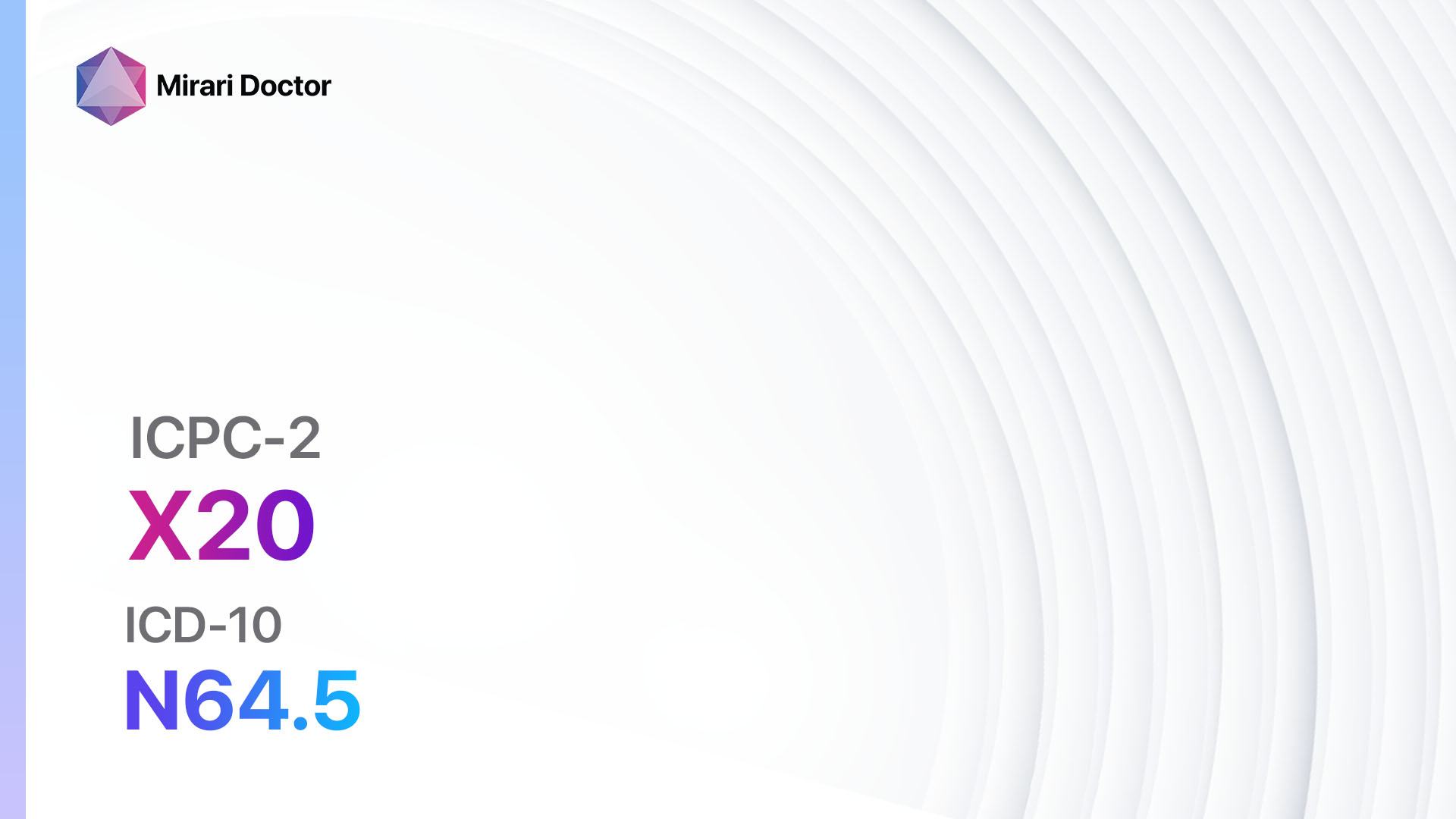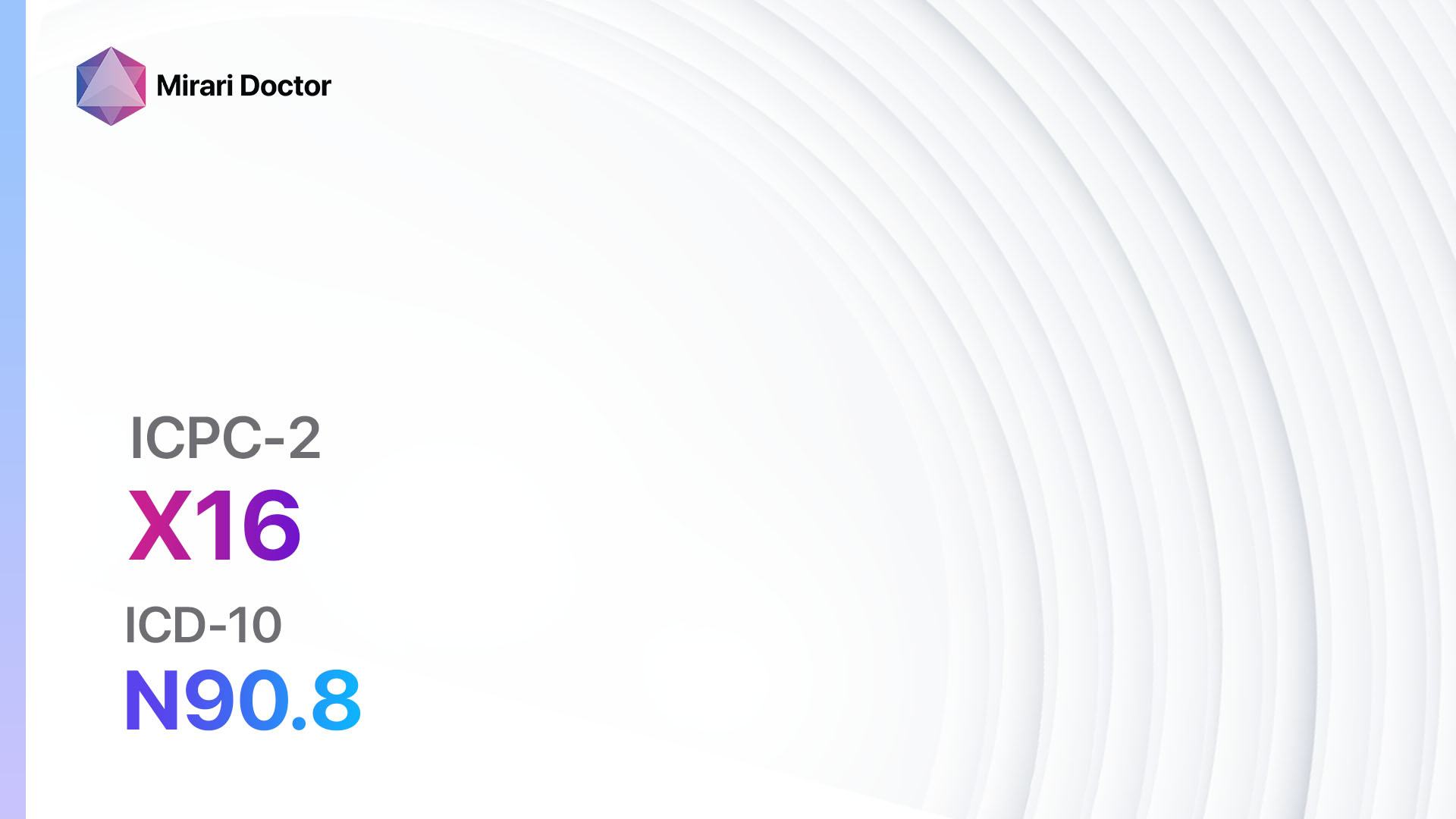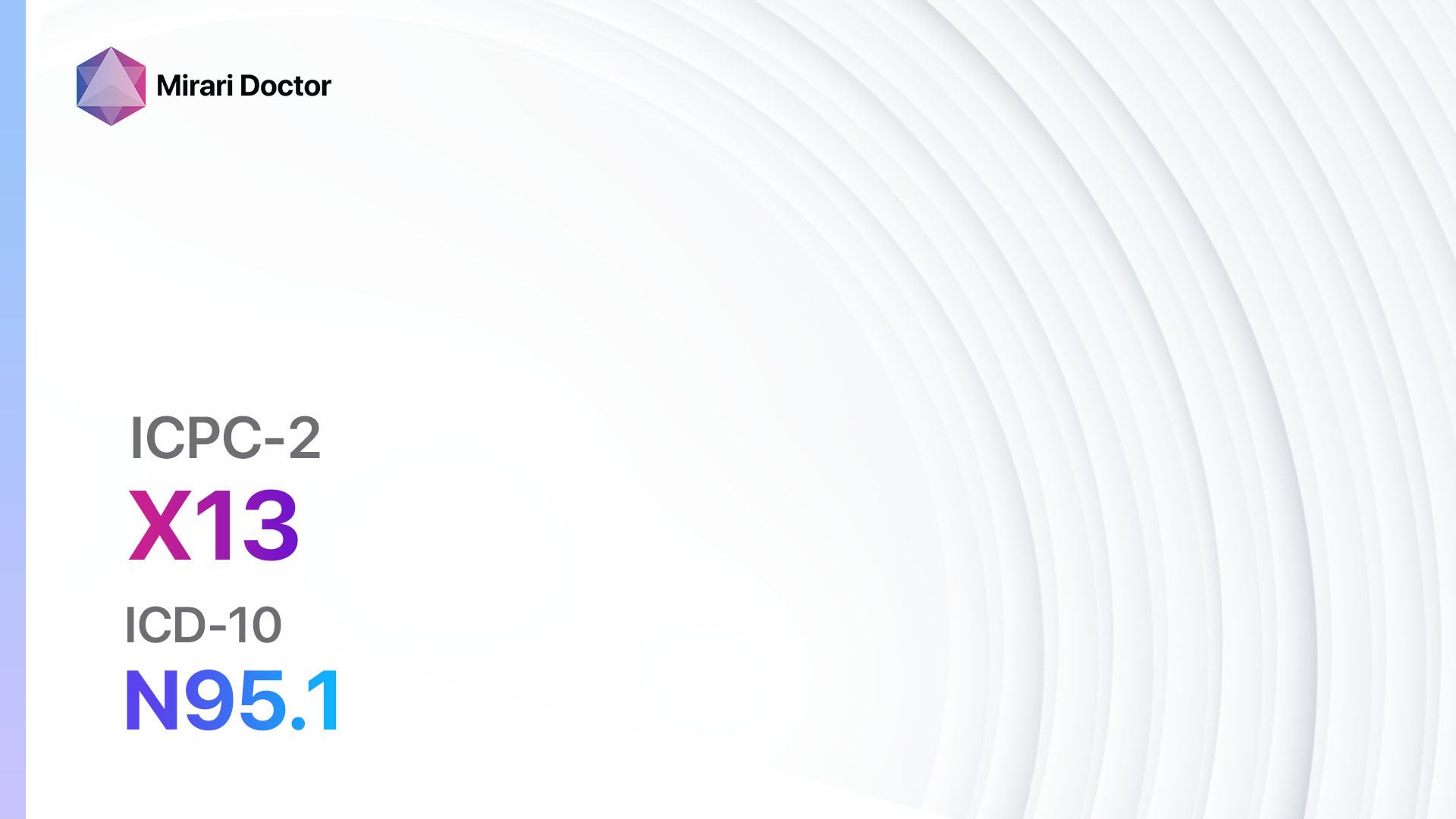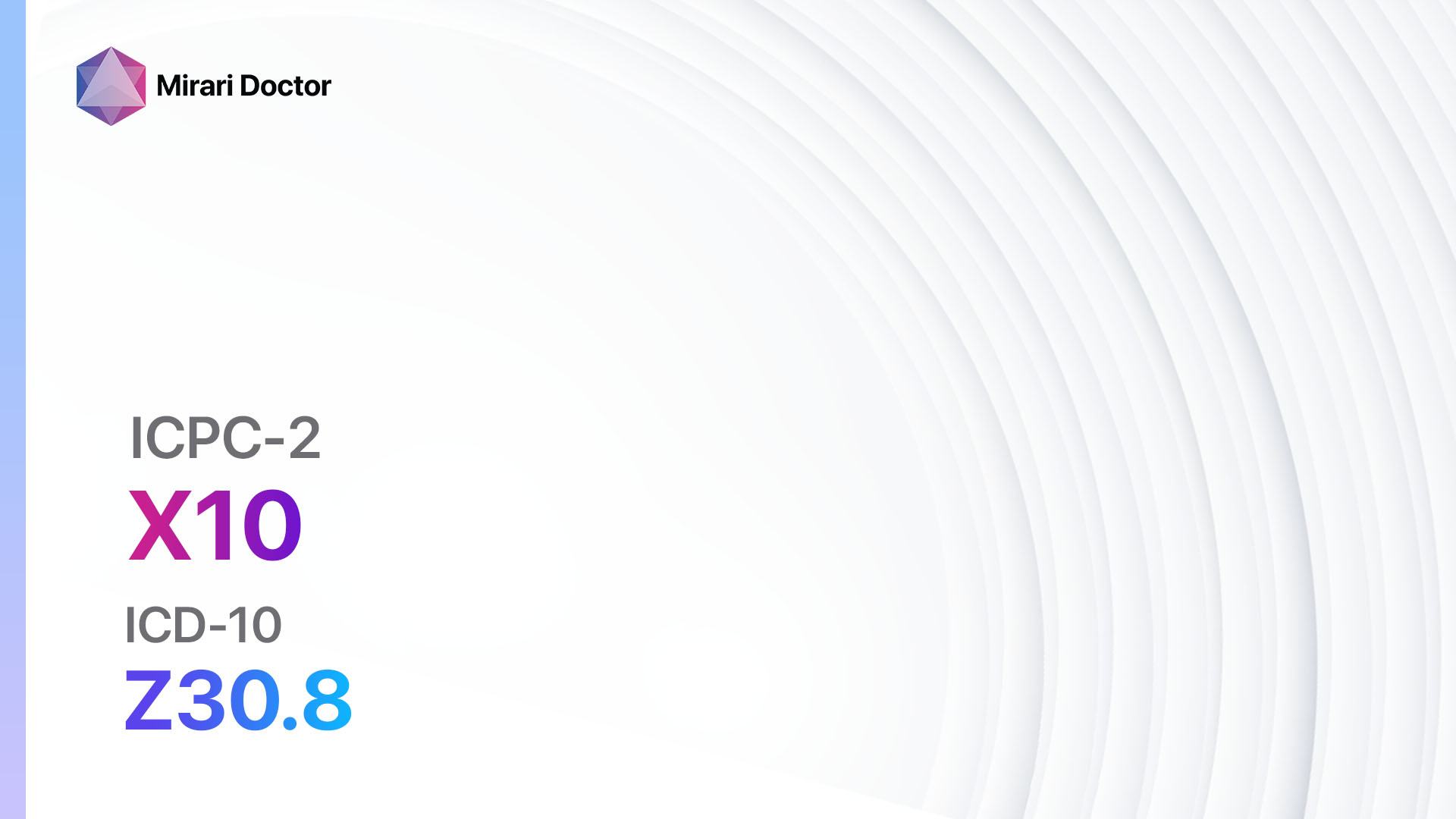
Introduction
Gonorrhoea is a sexually transmitted infection caused by the bacterium Neisseria gonorrhoeae[1]. It primarily affects the reproductive tract in women and can lead to serious complications if left untreated[2]. The aim of this guide is to provide a comprehensive overview of the diagnosis and management of gonorrhoea in females.
Codes
Symptoms
- Abnormal vaginal discharge: Women with gonorrhoea may experience a yellowish or greenish discharge from the vagina[5].
- Painful urination: Gonorrhoea can cause a burning sensation or pain during urination[6].
- Increased frequency of urination: Women with gonorrhoea may feel the need to urinate more frequently than usual[6].
- Pain during sexual intercourse: Gonorrhoea can cause discomfort or pain during sexual intercourse[7].
- Abdominal or pelvic pain: Some women with gonorrhoea may experience lower abdominal or pelvic pain[8].
Causes
- Sexual contact: Gonorrhoea is primarily transmitted through sexual contact with an infected partner[9].
- Unprotected sex: Engaging in sexual activity without using barrier methods, such as condoms, increases the risk of contracting gonorrhoea[10].
Diagnostic Steps
Medical History
- Gather information about the patient’s sexual history, including recent sexual partners and any history of sexually transmitted infections.
- Inquire about symptoms related to gonorrhoea, such as abnormal vaginal discharge, painful urination, or pelvic pain.
- Assess for any risk factors, such as unprotected sex or multiple sexual partners.
Physical Examination
- Perform a pelvic examination to assess for any signs of infection, such as redness, swelling, or discharge from the cervix.
- Check for any tenderness or pain in the lower abdomen or pelvic region.
- Look for any signs of complications, such as abscesses or pelvic inflammatory disease.
Laboratory Tests
- Nucleic acid amplification tests (NAATs): NAATs are highly sensitive and specific tests that can detect the presence of Neisseria gonorrhoeae DNA in a urine sample or a swab from the cervix or throat.
- Gram stain: A Gram stain of a cervical swab can be used to identify the presence of Neisseria gonorrhoeae bacteria.
- Culture: Culturing a sample from the cervix or throat can help confirm the diagnosis of gonorrhoea and determine the antibiotic susceptibility of the bacteria.
Diagnostic Imaging
- Diagnostic imaging is not typically used in the diagnosis of gonorrhoea.
Other Tests
- HIV testing: It is recommended to test for HIV infection in individuals diagnosed with gonorrhoea, as the two infections often coexist.
- Screening for other sexually transmitted infections: It is important to screen for other common sexually transmitted infections, such as chlamydia and syphilis, as they frequently occur alongside gonorrhoea.
Follow-up and Patient Education
- Provide education on safe sexual practices, including the use of barrier methods, such as condoms, to prevent the transmission of gonorrhoea and other sexually transmitted infections.
- Emphasize the importance of completing the full course of antibiotics as prescribed.
- Schedule a follow-up visit to ensure resolution of symptoms and to retest for gonorrhoea if necessary.
Possible Interventions
Traditional Interventions
Medications:
Top 5 drugs for Gonorrhoea:
- Ceftriaxone:
- Cost: $10-$50 per dose.
- Contraindications: Hypersensitivity to cephalosporins.
- Side effects: Diarrhea, nausea, vomiting.
- Severe side effects: Allergic reactions, anaphylaxis.
- Drug interactions: None reported.
- Warning: Resistance to ceftriaxone is increasing, and combination therapy may be necessary in some cases.
- Azithromycin:
- Cost: $10-$30 per dose.
- Contraindications: Hypersensitivity to macrolide antibiotics.
- Side effects: Diarrhea, nausea, abdominal pain.
- Severe side effects: Prolonged QT interval, liver dysfunction.
- Drug interactions: None reported.
- Warning: Azithromycin should be used in combination with ceftriaxone to maximize treatment efficacy.
- Doxycycline:
- Cost: $10-$30 per dose.
- Contraindications: Hypersensitivity to tetracycline antibiotics, pregnancy.
- Side effects: Nausea, vomiting, photosensitivity.
- Severe side effects: Severe skin reactions, liver dysfunction.
- Drug interactions: Antacids, iron supplements, oral contraceptives.
- Warning: Doxycycline is not recommended for pregnant women or children under the age of 8.
- Ciprofloxacin:
- Cost: $10-$30 per dose.
- Contraindications: Hypersensitivity to fluoroquinolone antibiotics, pregnancy.
- Side effects: Nausea, diarrhea, headache.
- Severe side effects: Tendon rupture, peripheral neuropathy.
- Drug interactions: Antacids, iron supplements, oral contraceptives.
- Warning: Ciprofloxacin is not recommended as first-line treatment due to increasing resistance.
- Gentamicin:
- Cost: $10-$50 per dose.
- Contraindications: Hypersensitivity to aminoglycoside antibiotics, pregnancy.
- Side effects: Nausea, vomiting, kidney damage.
- Severe side effects: Hearing loss, allergic reactions.
- Drug interactions: None reported.
- Warning: Gentamicin should be used in combination with azithromycin or doxycycline to maximize treatment efficacy.
Alternative Drugs:
- Cefixime: An alternative to ceftriaxone for patients who cannot tolerate or have contraindications to ceftriaxone.
- Gemifloxacin: An alternative to ciprofloxacin for patients who cannot tolerate or have contraindications to ciprofloxacin.
- Spectinomycin: An alternative for patients with cephalosporin or fluoroquinolone allergies.
Surgical Procedures:
- Surgical intervention is not typically required for the treatment of gonorrhoea.
Alternative Interventions
- No alternative interventions have been proven to effectively treat gonorrhoea. Antibiotic therapy is the standard treatment.
Lifestyle Interventions
- Abstaining from sexual activity until completion of treatment and resolution of symptoms.
- Practicing safe sex by using barrier methods, such as condoms, to prevent the transmission of gonorrhoea and other sexually transmitted infections.
- Educating sexual partners about the importance of getting tested and treated for gonorrhoea to prevent reinfection.
It is important to note that the cost ranges provided are approximate and may vary depending on the location and availability of the interventions.
Mirari Cold Plasma Alternative Intervention
Understanding Mirari Cold Plasma
- Safe and Non-Invasive Treatment: Mirari Cold Plasma is a safe and non-invasive treatment option for various skin conditions. It does not require incisions, minimizing the risk of scarring, bleeding, or tissue damage.
- Efficient Extraction of Foreign Bodies: Mirari Cold Plasma facilitates the removal of foreign bodies from the skin by degrading and dissociating organic matter, allowing easier access and extraction.
- Pain Reduction and Comfort: Mirari Cold Plasma has a local analgesic effect, providing pain relief during the treatment, making it more comfortable for the patient.
- Reduced Risk of Infection: Mirari Cold Plasma has antimicrobial properties, effectively killing bacteria and reducing the risk of infection.
- Accelerated Healing and Minimal Scarring: Mirari Cold Plasma stimulates wound healing and tissue regeneration, reducing healing time and minimizing the formation of scars.
Mirari Cold Plasma Prescription
Video instructions for using Mirari Cold Plasma Device – X71 Gonorrhoea female (ICD-10:A54.9)
| Mild | Moderate | Severe |
| Mode setting: 1 (Infection) Location: 0 (Localized) Morning: 15 minutes, Evening: 15 minutes |
Mode setting: 1 (Infection) Location: 0 (Localized) Morning: 30 minutes, Lunch: 30 minutes, Evening: 30 minutes |
Mode setting: 1 (Infection) Location: 0 (Localized) Morning: 30 minutes, Lunch: 30 minutes, Evening: 30 minutes |
| Mode setting: 3 (Antiviral Therapy) Location: 0 (Localized) Morning: 15 minutes, Evening: 15 minutes |
Mode setting: 3 (Antiviral Therapy) Location: 0 (Localized) Morning: 30 minutes, Lunch: 30 minutes, Evening: 30 minutes |
Mode setting: 3 (Antiviral Therapy) Location: 0 (Localized) Morning: 30 minutes, Lunch: 30 minutes, Evening: 30 minutes |
| Mode setting: 7 (Immunotherapy) Location: 6 (Throat, Lymphatic & Thyroid) Morning: 15 minutes, Evening: 15 minutes |
Mode setting: 7 (Immunotherapy) Location: 6 (Throat, Lymphatic & Thyroid) Morning: 30 minutes, Lunch: 30 minutes, Evening: 30 minutes |
Mode setting: 7 (Immunotherapy) Location: 6 (Throat, Lymphatic & Thyroid) Morning: 30 minutes, Lunch: 30 minutes, Evening: 30 minutes |
| Mode setting: 7 (Immunotherapy) Location: 1 (Sacrum) Morning: 15 minutes, Evening: 15 minutes |
Mode setting: 7 (Immunotherapy) Location: 1 (Sacrum) Morning: 30 minutes, Lunch: 30 minutes, Evening: 30 minutes |
Mode setting: 7 (Immunotherapy) Location: 1 (Sacrum) Morning: 30 minutes, Lunch: 30 minutes, Evening: 30 minutes |
| Total Morning: 60 minutes approx. $10 USD, Evening: 60 minutes approx. $10 USD |
Total Morning: 120 minutes approx. $20 USD, Lunch: 120 minutes approx. $20 USD, Evening: 120 minutes approx. $20 USD, |
Total Morning: 120 minutes approx. $20 USD, Lunch: 120 minutes approx. $20 USD, Evening: 120 minutes approx. $20 USD, |
| Usual treatment for 7-60 days approx. $140 USD – $1200 USD | Usual treatment for 6-8 weeks approx. $2,520 USD – $3,360 USD |
Usual treatment for 3-6 months approx. $5,400 USD – $10,800 USD
|
 |
|
Use the Mirari Cold Plasma device to treat Gonorrhoea female effectively.
WARNING: MIRARI COLD PLASMA IS DESIGNED FOR THE HUMAN BODY WITHOUT ANY ARTIFICIAL OR THIRD PARTY PRODUCTS. USE OF OTHER PRODUCTS IN COMBINATION WITH MIRARI COLD PLASMA MAY CAUSE UNPREDICTABLE EFFECTS, HARM OR INJURY. PLEASE CONSULT A MEDICAL PROFESSIONAL BEFORE COMBINING ANY OTHER PRODUCTS WITH USE OF MIRARI.
Step 1: Cleanse the Skin
- Start by cleaning the affected area of the skin with a gentle cleanser or mild soap and water. Gently pat the area dry with a clean towel.
Step 2: Prepare the Mirari Cold Plasma device
- Ensure that the Mirari Cold Plasma device is fully charged or has fresh batteries as per the manufacturer’s instructions. Make sure the device is clean and in good working condition.
- Switch on the Mirari device using the power button or by following the specific instructions provided with the device.
- Some Mirari devices may have adjustable settings for intensity or treatment duration. Follow the manufacturer’s instructions to select the appropriate settings based on your needs and the recommended guidelines.
Step 3: Apply the Device
- Place the Mirari device in direct contact with the affected area of the skin. Gently glide or hold the device over the skin surface, ensuring even coverage of the area experiencing.
- Slowly move the Mirari device in a circular motion or follow a specific pattern as indicated in the user manual. This helps ensure thorough treatment coverage.
Step 4: Monitor and Assess:
- Keep track of your progress and evaluate the effectiveness of the Mirari device in managing your Gonorrhoea female. If you have any concerns or notice any adverse reactions, consult with your health care professional.
Note
This guide is for informational purposes only and should not replace the advice of a medical professional. Always consult with your healthcare provider or a qualified medical professional for personal advice, diagnosis, or treatment. Do not solely rely on the information presented here for decisions about your health. Use of this information is at your own risk. The authors of this guide, nor any associated entities or platforms, are not responsible for any potential adverse effects or outcomes based on the content.
Mirari Cold Plasma System Disclaimer
- Purpose: The Mirari Cold Plasma System is a Class 2 medical device designed for use by trained healthcare professionals. It is registered for use in Thailand and Vietnam. It is not intended for use outside of these locations.
- Informational Use: The content and information provided with the device are for educational and informational purposes only. They are not a substitute for professional medical advice or care.
- Variable Outcomes: While the device is approved for specific uses, individual outcomes can differ. We do not assert or guarantee specific medical outcomes.
- Consultation: Prior to utilizing the device or making decisions based on its content, it is essential to consult with a Certified Mirari Tele-Therapist and your medical healthcare provider regarding specific protocols.
- Liability: By using this device, users are acknowledging and accepting all potential risks. Neither the manufacturer nor the distributor will be held accountable for any adverse reactions, injuries, or damages stemming from its use.
- Geographical Availability: This device has received approval for designated purposes by the Thai and Vietnam FDA. As of now, outside of Thailand and Vietnam, the Mirari Cold Plasma System is not available for purchase or use.
References
- Unemo M, Shafer WM. Antimicrobial resistance in Neisseria gonorrhoeae in the 21st century: past, evolution, and future. Clin Microbiol Rev. 2014;27(3):587-613. doi:10.1128/CMR.00010-14
- Tsevat DG, Wiesenfeld HC, Parks C, Peipert JF. Sexually transmitted diseases and infertility. Am J Obstet Gynecol. 2017;216(1):1-9. doi:10.1016/j.ajog.2016.08.008
- World Organization of Family Doctors (WONCA). International Classification of Primary Care, Second edition (ICPC-2). Oxford: Oxford University Press; 1998.
- World Health Organization. International Statistical Classification of Diseases and Related Health Problems (11th ed.); 2019. Available from: https://icd.who.int/browse11/l-m/en
- Sherrard J, Barlow D. Gonorrhoea in men: clinical and diagnostic aspects. Genitourin Med. 1996;72(6):422-426. doi:10.1136/sti.72.6.422
- Judson FN, Ehret JM, Eickhoff TC. Anogenital infection with Neisseria gonorrhoeae in prepubertal children. J Pediatr. 1978;93(5):751-754. doi:10.1016/s0022-3476(78)81075-1
- Barlow D, Phillips I. Gonorrhoea in women. Diagnostic, clinical, and laboratory aspects. Lancet. 1978;1(8067):761-764. doi:10.1016/s0140-6736(78)93022-4
- Soper DE. Pelvic inflammatory disease. Obstet Gynecol. 2010;116(2 Pt 1):419-428. doi:10.1097/AOG.0b013e3181e92c54
- Hook EW 3rd, Handsfield HH. Gonococcal infections in the adult. In: Holmes KK, Sparling PF, Stamm WE, et al., eds. Sexually Transmitted Diseases. 4th ed. New York: McGraw-Hill; 2008:627-645.
- Workowski KA, Bolan GA; Centers for Disease Control and Prevention. Sexually transmitted diseases treatment guidelines, 2015. MMWR Recomm Rep. 2015;64(RR-03):1-137.
Related articles
Made in USA













